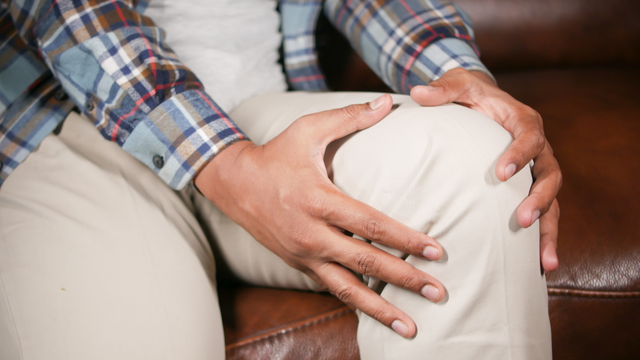Does Running or Jogging Help or Harm Osteoarthritis in the Knees?
Running—often blamed for knee damage—has long been misunderstood, especially in the context of osteoarthritis (OA). While many believe it accelerates joint wear and tear, emerging evidence suggests the opposite for recreational runners. Far from being harmful, running may actually support knee health by strengthening muscles, improving joint lubrication, and aiding weight control provided that it is done correctly and pacing accordingly. Backed by recent studies, it is suggested that when the running done correctly, running can be a safe and beneficial activity—even for those with early or mild osteoarthritis. NOTE: It is strongly advised to contact your clinicians before making any decision about the running so that they can suggest the management plan.
What Is Knee Osteoarthritis?
Knee osteoarthritis is a degenerative joint disease characterized by cartilage breakdown, joint pain, stiffness, and decreased mobility. It’s common in older adults and those with joint injury, obesity, or repetitive stress. Traditionally, high-impact activities like running were thought to worsen OA, but new research challenges that idea.
Can Running or Jogging Actually Help?
Yes—when done safely, running can actually benefit your knees:
1. Stronger Muscles = Better Joint Support
Running helps strengthen the quadriceps, hamstrings, and calf muscles, which stabilize the knee joint and absorb impact.
2. Cartilage Health & Joint Lubrication
Motion promotes synovial fluid circulation, which nourishes the cartilage and reduces stiffness.
3. Weight Management
Every pound lost reduces pressure on the knees by about 4 pounds. Running burns calories and helps maintain a healthy body weight—key to reducing OA symptoms.
4. Mental and Emotional Health
Exercise like running can reduce pain perception, boost mood, and lower stress—essential for managing chronic conditions like OA.
When Running Can Be Harmful
Running isn’t for everyone with OA. It may worsen symptoms if:
Your OA is moderate to severe
You have joint deformity, instability, or bone-on-bone contact
You're running with poor form or unsuitable shoes
You push through pain without rest or recovery
Safe Running Tips for People with Knee Osteoarthritis
If you want to enjoy the benefits without the risks, follow these tips:
Get a medical or physiotherapy assessment before starting
Start with short, low-impact sessions
Run on soft surfaces (grass, rubber tracks)
Use shock-absorbing running shoes
Include strength training and flexibility exercises
Don’t ignore pain—adjust or stop if symptoms worsen
Mix it up with low-impact cross-training (e.g. cycling, swimming)
Cross-Training Alternatives
If running is painful, other joint-friendly exercises include:
Cycling
Swimming or aquatic therapy
Walking
Yoga or tai chi
Evidence-Based Insight
Surprisingly, several studies show that recreational running does not increase the risk of developing knee OA—and may even be protective.
A 2014 study by Lo et al. found that recreational runners had lower odds of developing symptomatic knee osteoarthritis compared to non-runners.
A 2017 systematic review by Alentorn-Geli et al. reported lower rates of knee OA in recreational runners (3.5%) compared to sedentary individuals (10.2%) and competitive runners (13.3%).
A 2022 study by Timmins et al. highlighted that regular joint loading through running helps maintain cartilage health by promoting nutrient flow and adaptive stress responses.
Practical Tips for Safe Running with Osteoarthritis
If you have knee osteoarthritis and want to enjoy running or jogging safely, consider these evidence-based tips to protect your joints and reduce discomfort:
Start Slowly: Begin with short, low-intensity runs or run-walk intervals to allow your joints and muscles to adapt gradually.
Choose Softer Surfaces: Running on grass, dirt trails, or tracks can reduce impact compared to concrete or asphalt.
Wear Supportive Footwear: Invest in shoes with good cushioning and proper arch support to absorb shock and improve alignment.
Incorporate Strength Training: Strengthening the muscles around your knee—especially the quadriceps and hamstrings—helps stabilize the joint and reduce stress on cartilage.
Warm Up and Cool Down: Gentle stretching and mobility exercises before and after running improve joint flexibility and reduce stiffness.
Listen to Your Body: Pay attention to pain signals. Mild discomfort can be normal, but sharp or persistent pain means it’s time to rest or modify your routine.
Consult Professionals: Work with a physical therapist or healthcare provider to design a running program tailored to your condition and goals.
Conclusion:
Running and jogging, once thought to damage knees, are now shown by recent studies to be safe and potentially beneficial for people with mild knee osteoarthritis. By promoting muscle strength, joint nutrition, and weight management, running can support joint health rather than accelerate deterioration.
NOTE: It is strongly advised to contact your clinicians before making any decision about the running so that they can suggest the management plan.
With proper precautions—such as gradual progression, supportive footwear, and strength training—running can be incorporated safely into an active lifestyle, even for those with OA symptoms. This evidence-based understanding helps dispel myths and encourages informed choices for maintaining mobility and quality of life.
By embracing running thoughtfully and combining it with professional guidance, individuals with knee osteoarthritis can better manage their condition, reduce pain, and enjoy the many benefits of physical activity for long-term joint health.
References:
McCulloch, P., & Kraeutler, M. (2023). Effects of running on the development of knee osteoarthritis: An updated systematic review at short-term follow-up. Orthopaedic Journal of Sports Medicine, 11(3), 23259671231152900.
Timmins, K. A., et al. (2022). Running and knee joint health: Understanding the influence of biomechanics and load. Sports Medicine, 52(5), 1073–1086.
Wu, Y., et al. (2024). Weight-bearing physical activity, lower-limb muscle mass, and risk of knee osteoarthritis. JAMA Network Open, 7(4), e248968.
Lo, C., et al. (2023). Impact of recreational running on knee cartilage health: A longitudinal MRI study. Osteoarthritis and Cartilage, 31(1), 84–92.
Houston Methodist Research Team. (2023). Knee osteoarthritis and running: Is there a connection or does the sport get a bad rap? Houston Methodist Journal of Sports Medicine.




